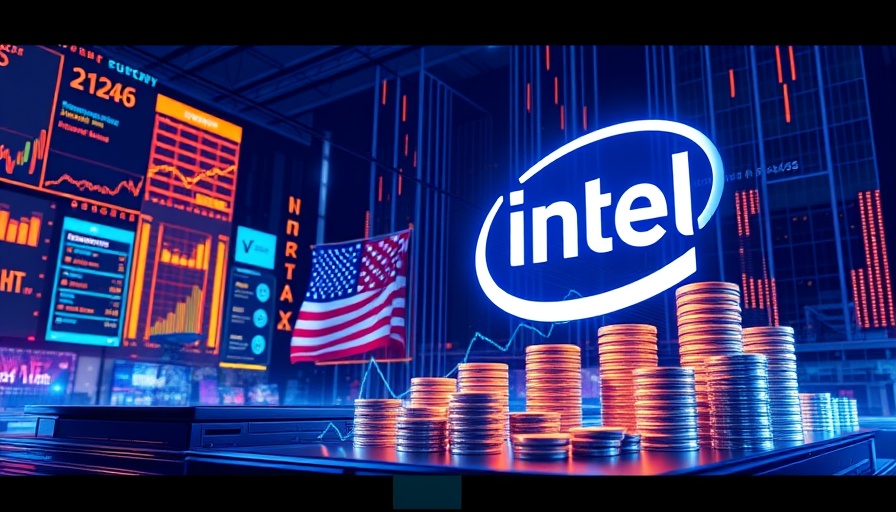
The Unprecedented Move: Government Takes Stake in Intel
The U.S. government’s planned acquisition of a 10% stake in Intel represents a significant shift in public policy regarding private sector investments. Announced by President Donald Trump, this decision comes as the nation seeks to strengthen its technological infrastructure amid a rapidly evolving global tech landscape. Boosted by this news, Intel's stock surged by over 7%, reflecting investor optimism regarding the company's future direction under government partnership.
Central Themes: Why Now?
This announcement occurs at a time of turmoil for Intel. Under CEO Lip-Bu Tan, the company is undergoing a transformation that involves shutting down divisions and laying off employees to focus on its core capabilities. This restructuring aims to help Intel regain its competitive edge against rivals, especially Nvidia, which has grown significantly in the semiconductor market. The move by the government signifies an effort to support this turnaround by having a direct stake in one of the world's largest chip manufacturers.
A Historical Perspective: Government Ownership in the U.S.
Historically, federal ownership stakes in private companies have been rare and often controversial in the U.S. The rare cases of government intervention occurred primarily during financial crises, such as during the 2008-2009 recession when the government took control of companies like General Motors and AIG. The decision to acquire a stake in Intel could set a precedent for future federal involvement in the private sector, especially as technological supremacy becomes increasingly vital to national security and economic strength.
Investor Reactions: Stock Market Implications
The immediate positive reaction in the stock market following Trump’s announcement underscores the mixed emotions. Investors tend to view government intervention with skepticism; however, in this instance, the injection of federal support may bolster Intel's credibility and enhance its access to resources and funding needed for innovation and growth. Many speculate whether this stake will translate to long-term stability and profitability for the tech giant.
Future Predictions: Will This Partnership Succeed?
Looking ahead, the success of this partnership will depend on several factors. Intel needs to effectively execute its restructuring plan and leverage the government partnership to secure contracts that can support its growth. Additionally, it must navigate the potential bureaucratic challenges that come with federal ownership. If handled correctly, this alliance could position Intel well against global competitors, fortifying its market presence and ensuring strategic autonomy in key technology sectors.
The Bigger Picture: National Security Concerns
The growing emphasis on technology as a matter of national security cannot be overlooked. With the U.S. facing stiff competition from China and other nations in semiconductor manufacturing and innovation, having a stake in Intel allows the government to ensure that American technological leadership is maintained. This partnership could serve as a buffer against supply chain disruptions that have become more apparent due to recent global events.
Final Thoughts: Toward a New Era of Tech Governance
This announcement is not just a financial maneuver; it could usher in a new era of accountability and governance in the tech sector. As the U.S. government steps onto the corporate stage, it is prudent to consider the long-term ramifications this could have on innovation, competition, and oversight. The implications are vast, and the tech industry will be watching closely to see how this unique partnership unfolds.
The U.S. government’s investment in Intel could mark a pivotal moment for the technology landscape, leading to more such collaborations in the future. As the lines between public and private sectors blur, the future of tech governance awaits its unveiling.
 Add Row
Add Row  Add
Add 



Write A Comment